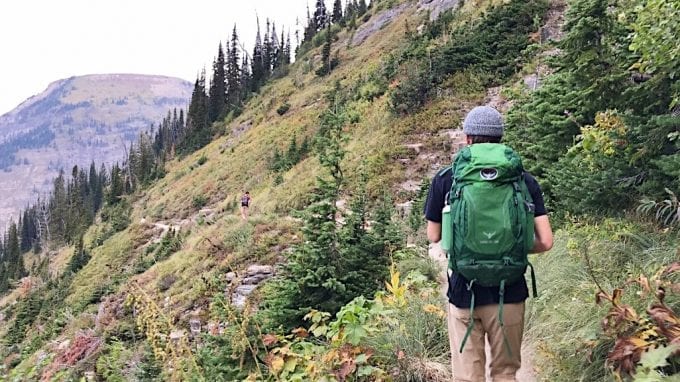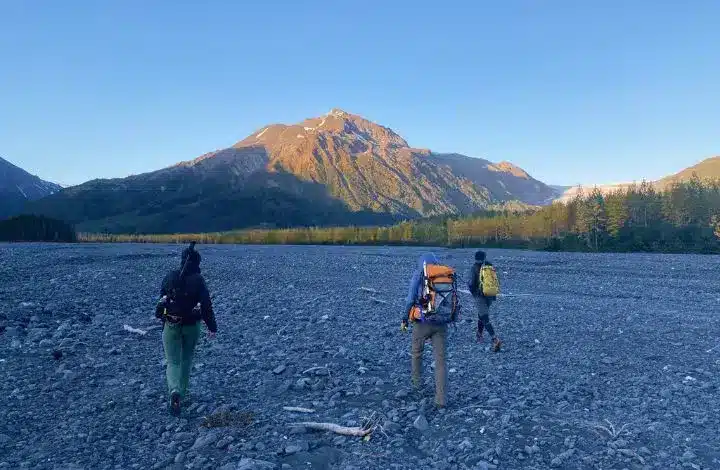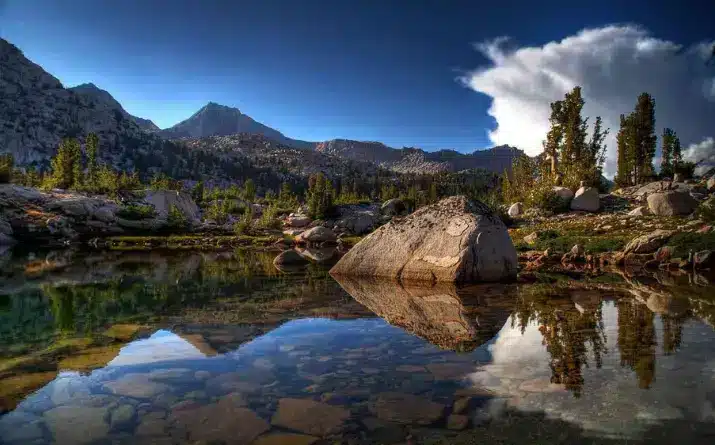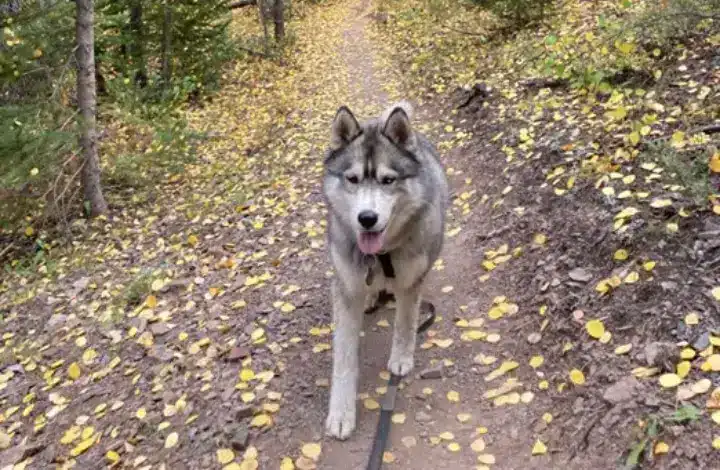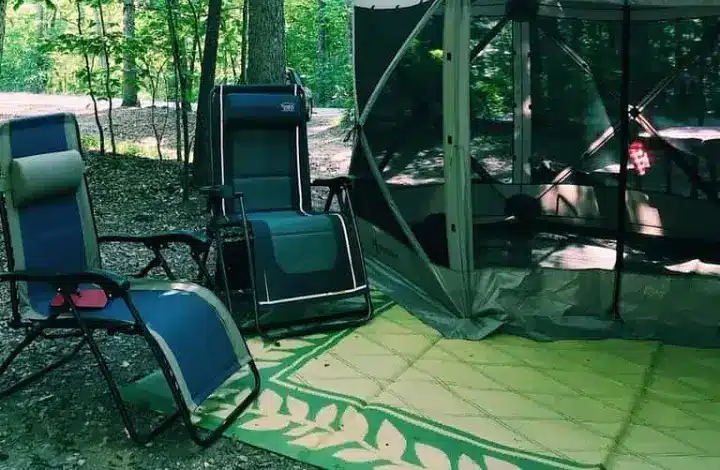Top 10 Essential Items to Carry While Day Hiking
Today I share with you an important list of the 10 essential items you should pack for any and all day hiking trips. This list is based on my own personal experience and inspiration from the original “Mountaineers’ Ten Essentials”. You want to ensure you have the right gear on your hikes for the best safety precautions.
All of us have our “everyday carry” items. For some people, these items include their wallet, keys, and chapstick. Others will also bring along a knife, some gum, and sunglasses.
In anticipation of the day’s events, we want to stay prepared by bringing along everything we may need. These items come with us everywhere, even in places where we might not need each and every component.
The same thing goes for our “day hiking carry”. When heading out into nature, we want to come prepared with some day hiking essentials.
In a lot of cases, the difference between an amazing hike and a disaster is dependent in large part on preparation.
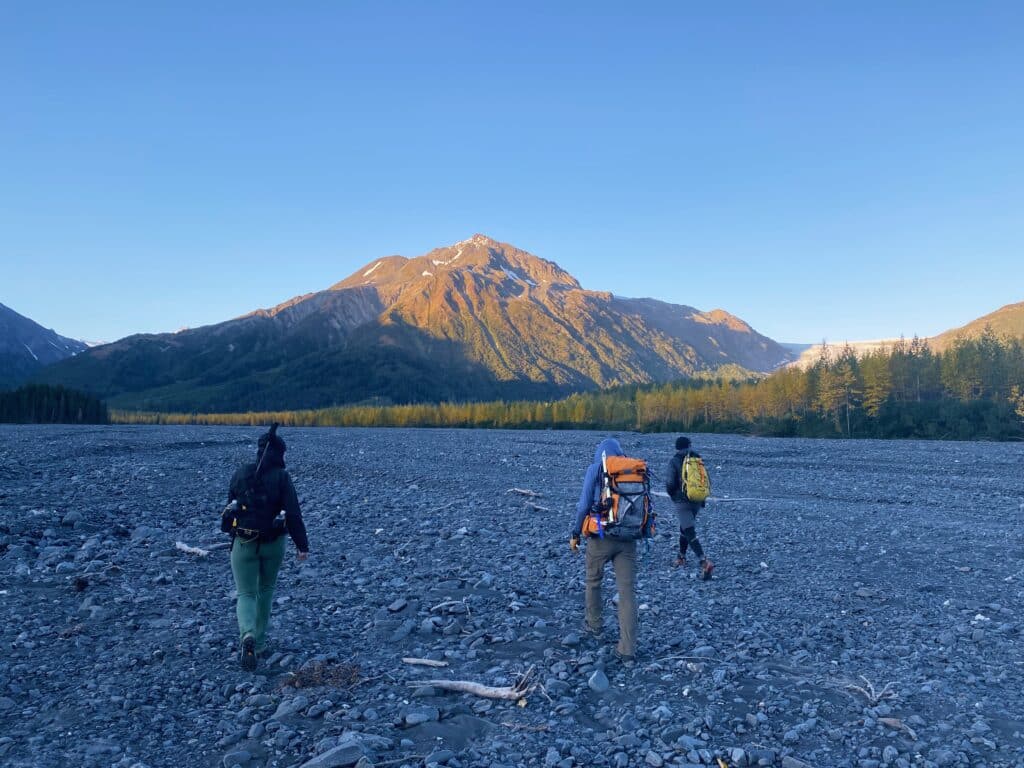
Getting into the habit of bringing along the “Ten Essentials,” even for day hikes, will set you up for success in the long run.
My hope is to inspire both beginner and experienced hikers to think ahead and prepare with emergency prevention in mind. Let’s dive in.
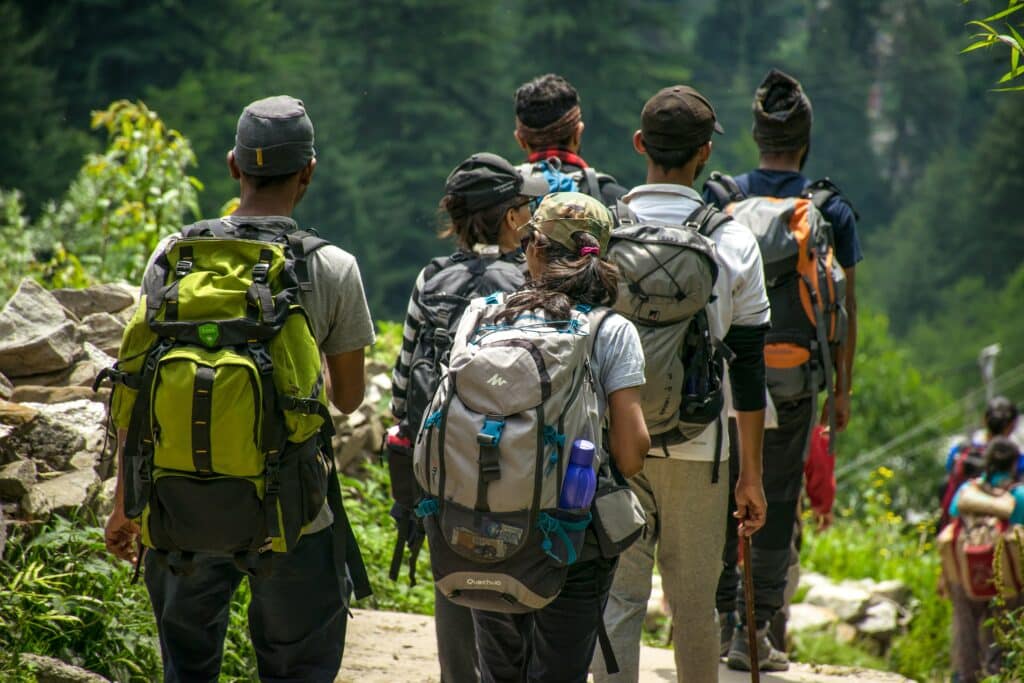
The Mountaineers’ Ten Essentials
The idea of carrying “ten essentials” every time you head out into the wilderness has been around for a while.
The first official list for the “ten essentials” system was created back in the 1930s by the climbing organization The Mountaineers.
Over the years, this list has seen changes that further refine the “ten essentials” safety net.
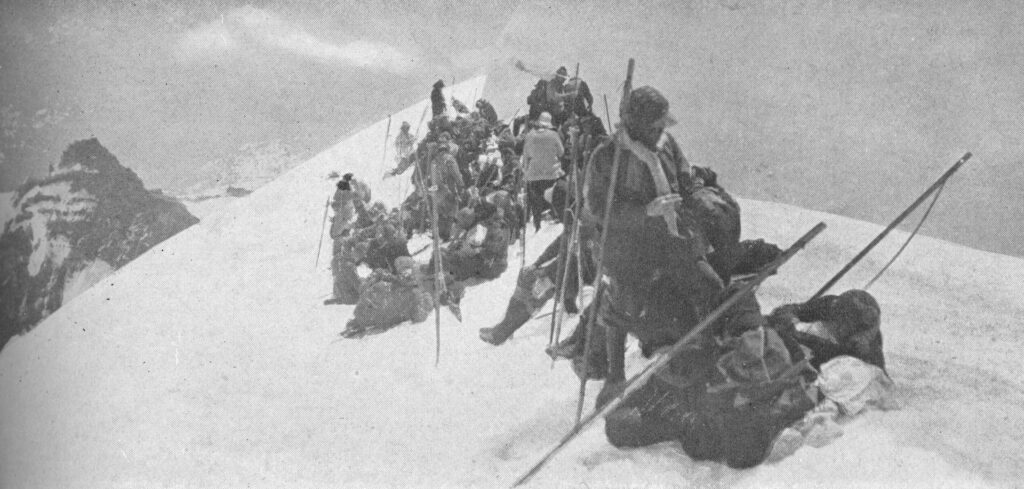
For general hiking, you may not feel that it is necessary to bring all of these systems. Particularly if you are hiking on a fairly popular trail with many people around.
However, understanding the systems and making an educated decision about what to carry in your pack is vital for emergency preparation.
Here is an overview of the Mountaineers’ Ten Essentials:
Prevent Emergencies
- Navigation
- Headlamp
- Sun protection
- First Aid
- Knife
- Water filter
Safely Spend the Night Outside
- Fire
- Shelter
- Extra food
- Extra water
- Extra clothes
Bringing all of these components may feel like overkill. I don’t blame you for feeling that way. For general day hiking, our list of the ten essentials is going to look slightly different.
Top 10 Essential Items for Day Hiking
This list of day hiking essentials is basically going to be a slightly altered version of the mountaineers’ essentials. Instead of being geared towards people who climb mountains, it will be geared towards people who hike trails.
1. Daypack
In order to choose the correct daypack, it’s important to know the length and difficulty of the hike you are planning to take.
For a short to medium-length hike, let’s say 2 to 5 miles, a pack that is 15 to 20 liters should suffice.
For a longer hike, around 6 to 15 miles, you may need to bring more food, water, and equipment. A 21 to 35-liter backpack will allow you to carry those extra things.
The size of your backpack will also be determined by the challenges you expect to face on the trail.
For example, maybe there is rain in the forecast. If this is the case, you will want to bring full rain layers in your daypack, thus taking up more space.
Similarly, if you expect the temperature to fluctuate as you progress along the trail, packing insulating layers will take up more space in your pack.
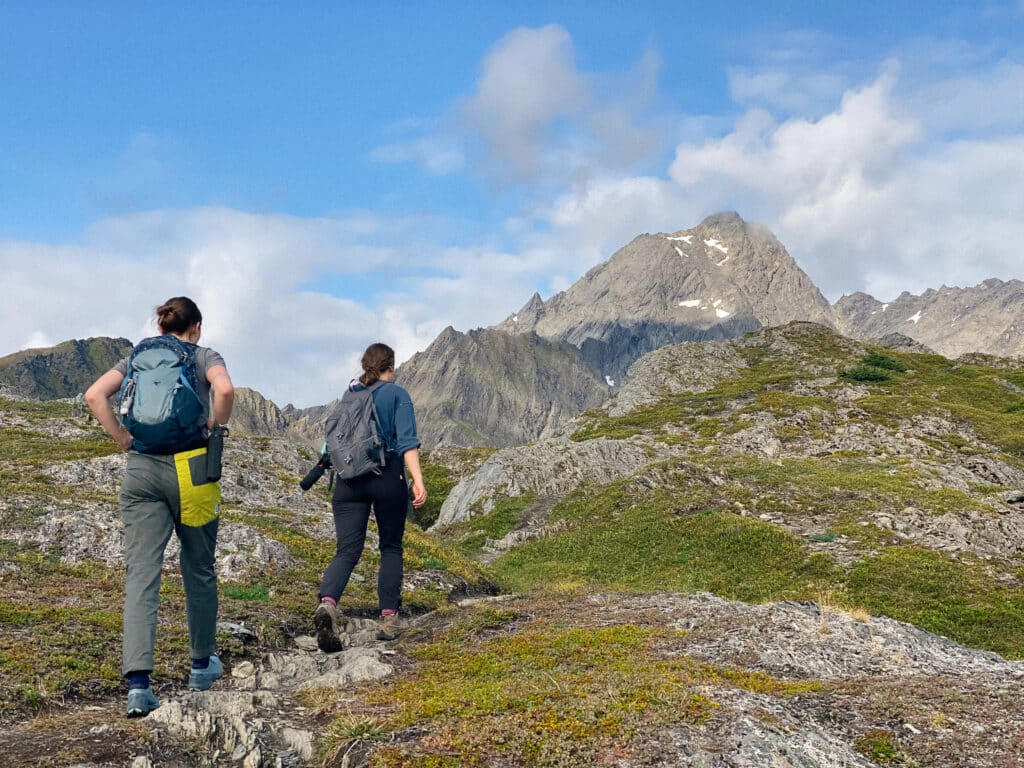
2. Proper Footwear
Choosing the best footwear for the trip isn’t always as straightforward as it may seem.
As a utilitarian Alaskan who enjoys using specific equipment for each unique situation, I have a wide variety of shoes and boots. Depending on where I am going and how long I will be trekking, my shoe choice ranges from Chaco sandals to 3-season mountaineering boots.
It is always useful to understand the biome that you will be hiking in. Are you hiking somewhere with a lot of boulder fields and/or scree? Well, sandals may make your life miserable.
There are few things more infuriating to me than getting a small rock lodged under my foot on the trail. Full-on mountaineering boots may be overkill for the task at hand, but if they are comfortable to you, I say go for it. The same goes for any type of shoe.

3. Clothing Layers
Whenever heading out into the wilderness, coming prepared with ample layers and the know-how to implement those layers into a tight system will upgrade your comfort considerably.
Starting with a solid set of base layers made of materials such as merino wool will set you up for success. The base layer has the job of wicking away sweat and excess moisture so that you can stay warm and dry.

Midlayer
On top of the base layer comes the midlayer. Midlayers can range from thin synthetic fleece tops all the way to insulating down jackets.
The bulk of your warmth will come from the midlayers you choose to implement, so it’s important to know which type of midlayer is best for the situation.
The shell layer comes after the midlayer, topping off our layering system with strong protection from the elements. Shells can range from fully waterproof to water-resistant.
Understand the Region and Forecast
Knowing the weather and climate of the area is a necessity. When mild to strong precipitation is expected, you better plan ahead with fully waterproof shell layers. In sunny conditions, you may feel comfortable not bringing a shell along at all.
Gaining experience with layering will allow you to make better and better judgment calls when it comes to packing clothing.
Because it’s so important, I wrote an entire article about the layering system that I use for most situations, so give that a look if you’re curious.
4. Extra Food
Some high-quality and nutrient-rich trail snacks are a great way to keep your energy up on the trail. There are classic trail foods such as trail mix, granola bars, and fruit, all of which are fantastic day trip foods.
When packing food either the night before or the morning of the hike, I will always pack more than I actually think I need. It’s generally a good idea to do this for a couple of simple reasons:

5. Extra Water
Carrying more water than you need may seem like a good idea, but in reality, the extra weight is not always worth it. As a general rule of thumb, bring along half a liter of water for every hour of moderate hiking.
Bring along ample water for the length of the hike, plus a way to filter freshwater if the need for extra water arises.
Always bring a water filter, even if you’re planning a moderate day hike. A LifeStraw, at only 9″ in length and 0.1 pound, is compact enough to fit in any backpack and can save you from dehydration. At a minimum, carry purification tablets, to protect against viruses and bacteria.
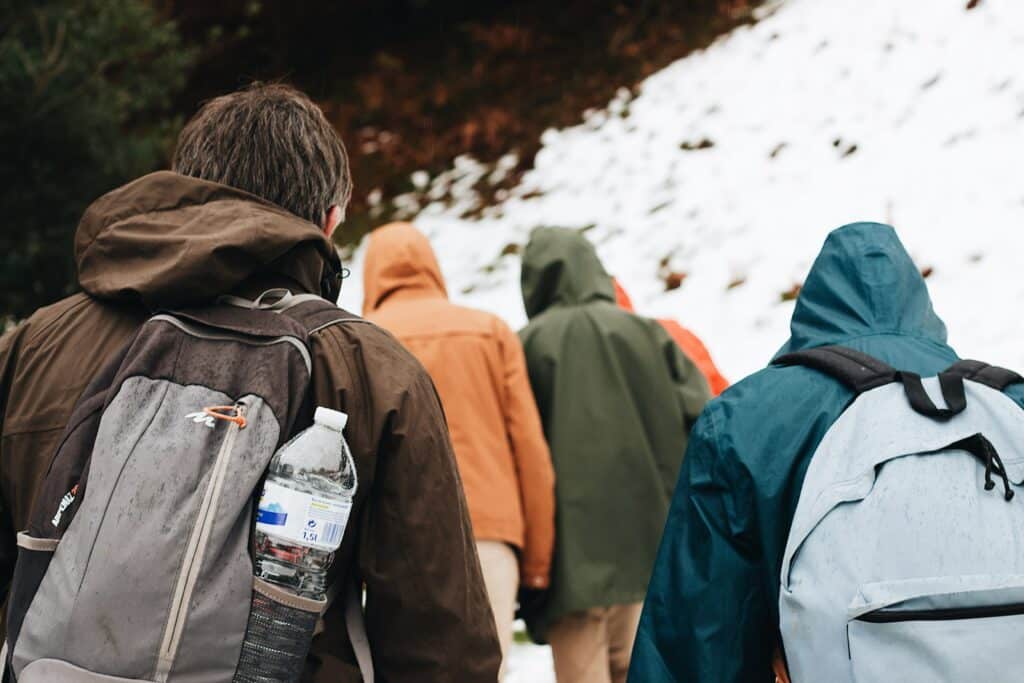
6. First Aid
First Aid is one of those things that everyone knows they probably should bring on a hike, but fail to do so. I’ll be the first to say that I am guilty of this.
No matter how prepared you feel you are, without a first aid kit within easy reach, there is room for improvement.
If you’re more of a DIY kind of person, it is fairly simple to find all of the components you need and create your own personalized First Aid Kit. Otherwise, most outdoor stores will supply some variation of a ‘Hiker’s First Aid Kit’.

7. Navigation
Having the ability to find your way back to the trailhead when lost in the wilderness is invaluable. Even if you’re hiking on a very visible trail, bringing along a compass and a map is a good idea.
Some people opt to use their phones for this purpose. On a shorter hike that is well marked and trafficked, this is generally fine.
When taking a longer hike that heads pretty far into the backcountry, you probably don’t want to rely 100% on your phone.
For my peace of mind, I usually at least throw a compass into my bag. Having a screenshot of the trail map is also a typical practice for low-risk trails.
Modern day applications such as FATMAP are incredibly valuable when navigating as well.
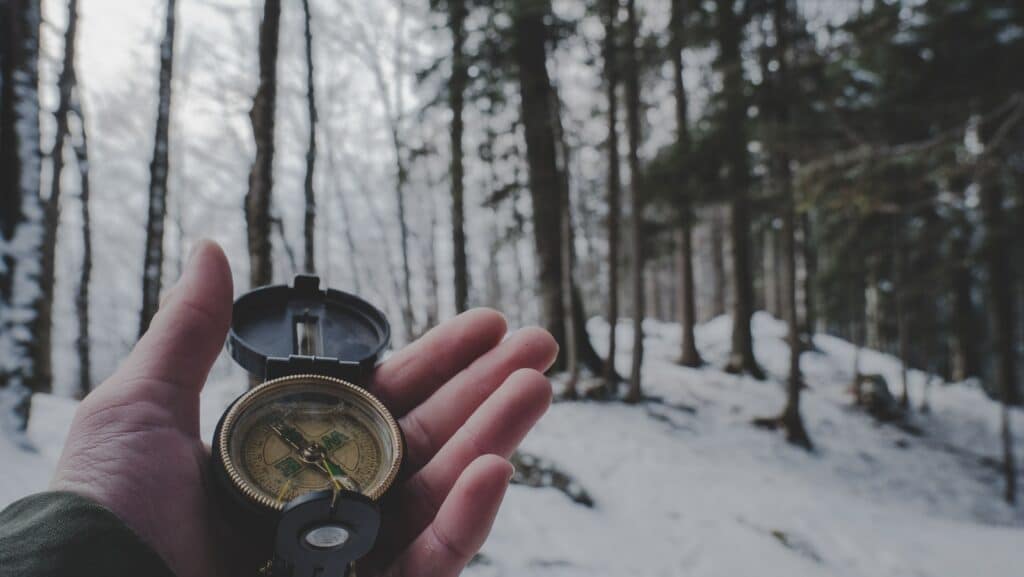
8. Knife/Multi-tool
There are some things that need to be done on the trail that human hands simply don’t excel at. Having a knife or multi-tool in your daypack could be useful in more ways than one.
If the need for an emergency campfire arises, a knife can quickly shred up some kindling. Need to repair some gear? A multi-tool fitted with pliers and screwdrivers can be a lifesaver.
You’ll never know when you’ll need it. And I can pretty much guarantee that you will indeed need it.
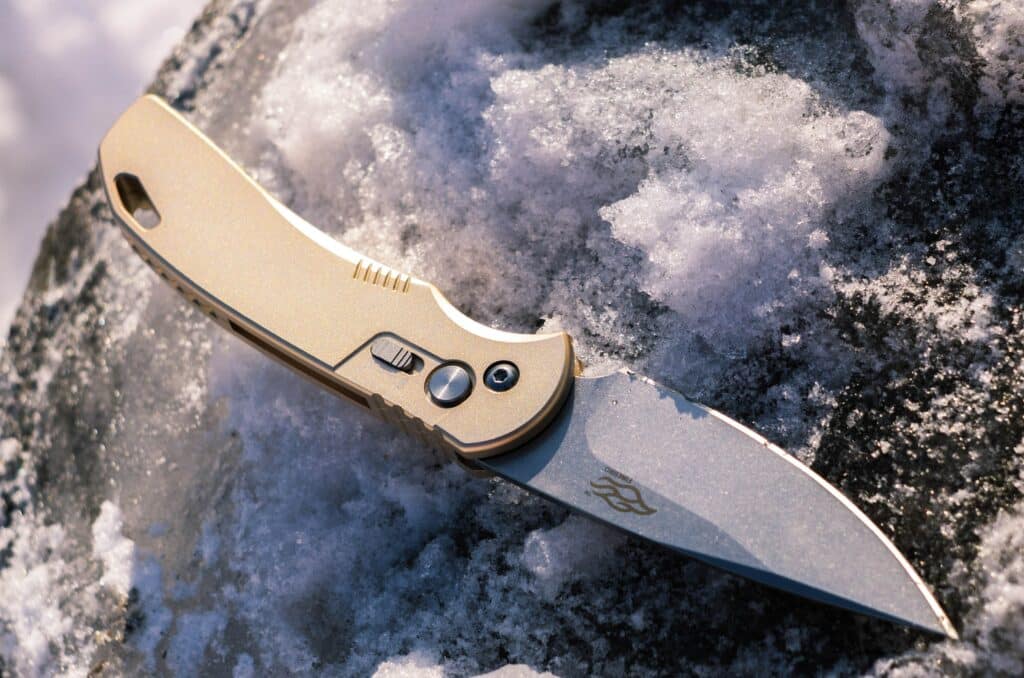
9. Sun Protection
Protection from the sun is absolutely vital during hikes. Too much exposure to the sun can zap your energy, create sunburns, and affect your ability to see properly. Sunscreen, sunglasses, and sun protection in the form of clothes are all items you should pack.
The need for these items is not limited to particularly sunny days. Even on days with cloud coverage, the UV rays from the sun still contact our bodies.
Sun protection isn’t something I have always taken seriously, but I’ve begun to understand the value of proper UV protection. I encourage you to do the same.

10. Other Safety Gear
Headlamp, lighter, tinder, or even a camping stove are all great things to add to your pack. Besides the camping stove, all of these things take up very little space in your pack but can be lifesaving in extreme conditions.
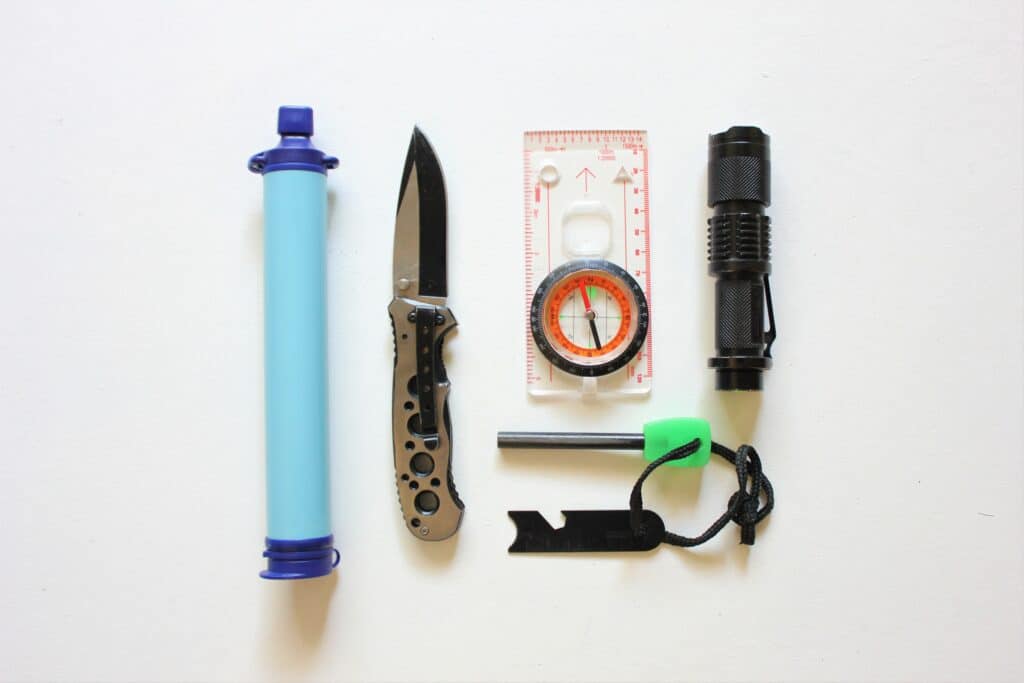
The Right Day Hiking Gear Will Elevate Your Adventure
Being in need of one of these components and not having it is much worse than carrying it and not needing it. Create the habit of bringing along these hiking essentials early on. Then, when you start taking on longer, more challenging hikes, your packing skills will be up to par.
Before you head out on your next day hiking adventure, keep this list of the ten-day hiking essentials in mind. Don’t be caught on the trail without everything you need!
Related story from Isabel, a TREKKN colleague
I recall a time when I was living in Switzerland. My friend had come out for a visit and we left one day for what was meant to be a short drive to see the neighborhood. We ended up on a spontaneous “quick” hike near Grindewald, which is a small village in the Bernese Alps.
It was incredible. The crisp clean air and breathtaking views made me forget we were unprepared. We didn’t have water!
We were so engrossed in our joyful day, we disregarded impending doom. By some grace of luck, we found a small outpost about 4km along the trail. We bought soup and water before retreating back down the mountain.
Lesson learned! Make sure you have the essentials for your day hikes.
Related Reading
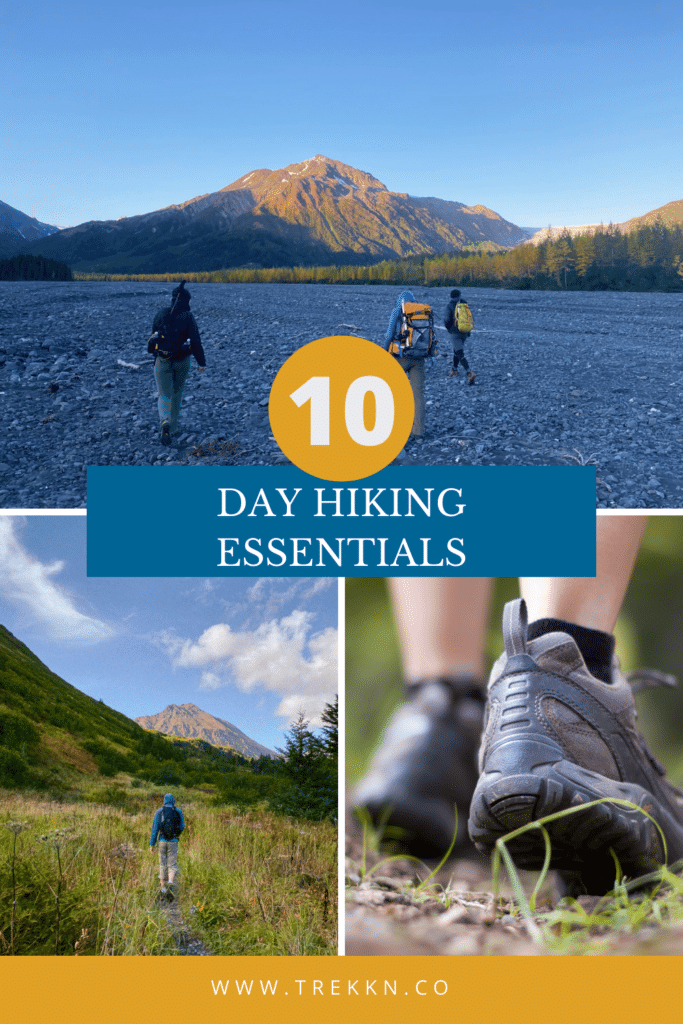
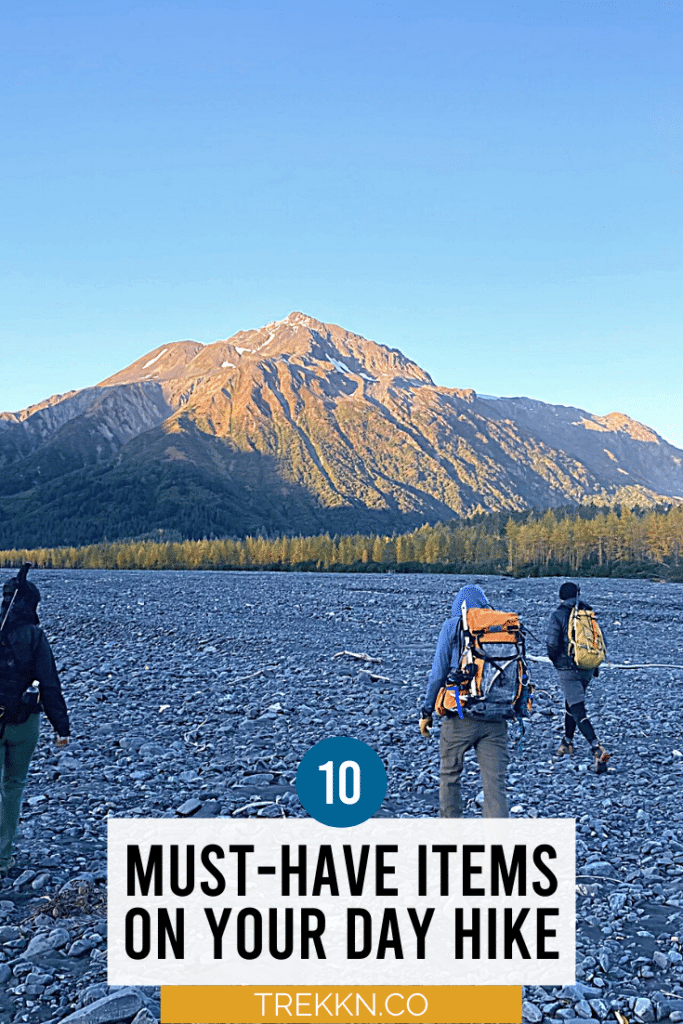

Josiah B gained invaluable experience while living on the road with his family, during which time he felt overcome with the desire to continue exploring. That search landed him in Seward, Alaska, where he currently resides. His love for the outdoors is welcome with open arms in the Last Frontier, and with an endless amount of hiking and backpacking to be done, he’s eager to share the best that Alaska has to offer.


